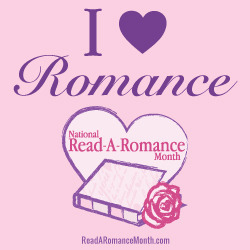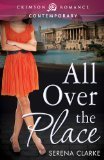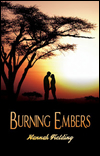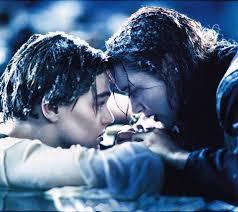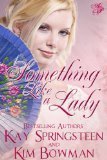Hannah Fielding's Blog, page 125
August 5, 2013
Dialogue matters
Any novelist appreciates that dialogue is an essential part of a story. It’s the means by which you follow the golden writing rule of ‘show, don’t tell’ – it’s the vehicle through which characters reveal themselves and the unfolding story.
I love writing dialogue because it really encapsulates the living, breathing characters in my mind. It’s a chance to break out of poetic prose, such as these lines from Burning Embers…
There, under the vigilant stars, lay the sleeping jungle, abandoned and mysterious.
Time had drifted on as golden, luminous days turned into sapphire moonlit nights.
There, entirely enclosed by flowering shrubs, lay a phosphorescent expanse of water shimmering like a sheet of silk.
… and strike a different tone, exploring how lovers speak in real terms to each other:
“Damn you, Coral, you could drive a saint to drink,” he said, his voice thick and trembling with emotion.
“You think you can waltz back into my life with no explanation, expecting me to swoon at your feet.”
“I’m a very possessive woman, Rafe. I can’t bear anybody else touching you.”
But dialogue also affords an opportunity to fashion the most romantic of dialogue – those words that lovers long to hear; and it is lines such of these I most love to write:
“Your skin has the translucence of fine china, so fresh, so unblemished. Such perfection is almost sinful.”
“I will treasure you all my life. Now that I’ve found you, I will never let you go. Nothing else on earth counts.”
“I’ll make you love me; I know I can. You won’t ever want another woman.”
“Every nerve in my body has missed you and ached for you, my darling. I can’t wait to be alone with you.”
August 4, 2013
Win plenty of goodies in this giveaway by Justine Dell…
… including my novel, Burning Embers, loaded onto that Kindle Fire! Good luck!
Read-A-Romance Month
August is Read-A-Romance Month!
I stumbled across this initiative recently, and was keen to share it with those readers of my blog who, like me, love to read romance.
What a marvellous idea! As Burt Bacharach so eloquently put it: ‘What the World Needs Now Is Love.’ I don’t believe anyone would be worse off for reading one romance novel in the month of August.
Read-A-Romance has two great elements:
Some great contests to win ereaders and romance books.
Three authors per day exploring why they believe romance matters.
The second most interests me, because it’s a subject I am passionate about. The event organisers released a quote from the first essay on the subject, by bestselling author Susan Mallery, to the media:
“Romances do not repress women, as is sometimes implied in the media. To the contrary, our books empower women. These are heroine-driven books, with strong women in every career imaginable, triumphing over obstacles… These are books that teach women that we can do anything, be anything. And they teach women that men have to earn the right to be with us.”
Well put!
I very much look forward to reading the daily opinion pieces. If you’d like to do so too, visit http://www.readaromancemonth.com.
August 2, 2013
Book review: All Over the Place by Serena Clarke
From the blurb:
Livi Callaway has fled back to London after a reality TV disaster in New Zealand. Safely anonymous in the big city, she’s determined to stay under the radar from now on. But her attempts to build a new life are complicated by unexpected visitors from her old one, and new dangers and temptations lie in wait.
Late one night, she meets a mysteriously sexy American on the Underground – and the events that follow take her from Pooh Bear to the golden lights of Paris, via a trail of rock stars dead and alive. A family in disarray, a determined Swede, a crazed Australian, and a childhood friend (who might yet be more than that) have her all over the place as she tries to discover the American’s secret – while keeping her own.
With help – and occasional hindrance – from her friends, what she eventually finds is something unexpected . . . sometimes, running away can lead you to exactly what you didn’t know you needed.
All Over the Place is a riot of twists and turns as we follow self-confessed ‘country mouse’ Livi Callaway’s exploits when she unexpectedly seeks out love far away from home. Serena certainly knows how to twist stories together to make a satisfying whole.
The book starts with Livi finally feeling happy in her new life in London, having escaped from a broken engagement and national humiliation back in her home country of New Zealand. With a new job, a new home and a collection of glamorous friends, Livi is finally settling down. However, a chance meeting with the mysterious and handsome American Ryan, on a crowded and sweaty London Underground train, leaves her with a battered old satchel and a mystery to solve – and an adventure for the reader!
Encouraged by her flatmate, Cas, Livi determines to return the satchel to the American. With no name or address to go on, Livi and her friends set to deciphering a series of clues as to the whereabouts of the man, taking them from Winnie the Pooh’s Hundred Acre wood to the romance and sophistication of Paris. Sweet-natured and kind-hearted, Livi must also cope with unwanted romantic overtures and a family drama which reaches out from the other side of the world. Along the way we learn about Livi’s past and why it is she fears that she cannot return home.
All Over the Place is a fun romance novel. Livi’s character is instantly likable, and she is someone to whom we can all relate. From her neuroses to her secret shoebox of chocolates, Livi is the best friend that we would all wish we could be. It is a strong testament to the realism of Serena Clarke’s writing that the reader can feel such an attachment to her, and I was desperate for things to work out for the best in the end. Serena’s writing perfectly captures the realities of living in a city such as London, from the drabness of the daily commute to colourful descriptions of the Notting Hill carnival and the elegance and high culture of the National Gallery. We also get a taste of the downsides and camaraderie of working in a glamorous Soho salon.
Within the book, Livi is in the enviable position of being almost assailed by offers from handsome, eligible men – from her former fiancé Rob, to the kind-hearted translator Matthias – and it seems at times that Livi is batting them off. However, it is the attentions of two men in particular that catch the reader’s attention, and this forms the major romantic thrust of the novel. Both men are well written and encapsulate all of the best elements of the spectrum of perfect leading men, leaving Livi with that most delicious of dilemmas – should she choose the mysterious and exciting Ryan or the bookish good-guy and childhood friend, Cam? Suffice it to say that the ending does leave the reader satisfied, but also wondering what happens next.
Overall, I really enjoyed this book. There are some books that call out for a sequel and All Over the Place is certainly one of those!
All Over the Place is available now from Amazon; click on the book cover below to visit the store.
August 1, 2013
A little peek of Paradise
July 31, 2013
Summer Giveaway Hop: Win a steamy summer romance novel
For this hop I’m giving away three copies of my book Burning Embers:
To enter, simply comment on this page by the end of 7th August with your name and email address telling me which of the following lines from Burning Embers extracts you like best:
His proximity was making her dizzy but she let him hold her, drinking in his touch as he caressed her head.
The black cloak of night began to lift…a monochromatic dawn of decreasing hues, from indigo to steel blue.
“I will treasure you all my life. Now that I’ve found you, I will never let you go. Nothing else on earth counts.”
Be sure to visit these other great blogs also running giveaways in the hop.
July 30, 2013
Five essential ingredients for creative inspiration
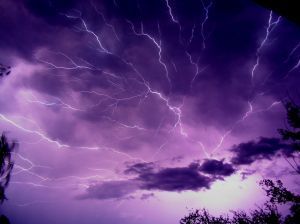 Where do painters and sculptors and composers and songwriters and playwrights and authors and poets and architects and all other creative types get their ideas? Ask any individual and he or she will give you a unique answer – art stems from a particular place inside. But collate enough answers and you start to see common areas.
Where do painters and sculptors and composers and songwriters and playwrights and authors and poets and architects and all other creative types get their ideas? Ask any individual and he or she will give you a unique answer – art stems from a particular place inside. But collate enough answers and you start to see common areas.
Without the following five influences, most creatives struggle to find ideas and crystallise them into workable plans.
1. Nature
Who can create a powerful, emotive work locked up in an uninspiring manmade space? Like Wordsworth’s walking tours which beget that wonderful poem ‘I wandered lonely as a cloud’, nature has long inspired creatives. We need to survey storms and sunshine and clouds. We need to ponder the varying hues of the sky and the sea. We need to inspect a flower, smell a leaf, taste a berry freshly plucked from a bush. Whenever we are dreaming, thinking, creating, our imaginations are heightened in nature.
Nature, for me, is a powerful inspiration. I am drawn to my gardens in Kent and France. I love to take walks along the beach or in neighbouring towns. I find much meaning in the poets and artists who are similarly affected by nature, such as one of my favourite poets, Leconte de Lisle.
2. People
No man is an island,
Entire of itself,
Every man is a piece of the continent,
A part of the main.
So wrote John Donne in the seventeenth century, and the truth holds today. Some forms of art endeavour to separate from humanity and immerse in nature alone; think of the poet holing up in his isolated cabin to be alone with his words. But most art is by nature of the people, and thus people are central to inspiration.
One of my favourite activities is to sit on a park bench or at a table of a pavement café and just people-watch. It is amazing what you learn by listening and watching and imagining.
3. Culture
Stephen King wrote: If you don’t have time to read, you don’t have the time (or the tools) to write. Simple as that.
I think he is right. How can you be a painter without studying others’ works? A choreographer who’s never attended the ballet? An author who doesn’t read?
Breadth of culture is what really matters. I don’t believe for a moment that Stephen King, prolific author of horror and thriller books, reads only horror and thriller books. To be inspired, you need a wide-ranging understanding and appreciation of culture. So you visit museums and galleries, and you read all kinds of books, and you sample all kinds of music, and you try different genres of films. The result is a melting pot of ideas and opinions and influences within which fuels your ideas bank.
4. Experience
Thoreau said it best: How vain it is to sit down to write when you have not stood up to live.
Writers are commonly told to write from the heart, from experience. That means having the dedication and courage to do two things:
Seek experiences: You have to be proactive and adventurous and seek out new experiences that will challenge you and broaden your outlook.
Process experiences: You have to be prepared to dig deep and access past experiences; allowing the learnings and all the associated emotions to come forth in your creation.
5. Space
You can’t conceive amid the frenzy of daily life. You need space for your mind to drift. That may mean mental space – letting your thoughts wander on the train as you commute home. It may mean emotional space – turning off your feelings about your daily concerns and allowing yourself time to be creative. Or it may mean physical space – shutting yourself in a quiet room, going for a walk alone or taking a long bath, perhaps.
Personally, I find dedicated alone time for creativity works well. It can be frustrating to spark up an idea in the middle of a dinner party and then try to juggle being sociable outwardly with processing the idea inwardly. But for times when inspiration strikes and you simply can’t make the space to sit with it, keep a notebook to hand. Write down every idea, no matter how odd it seems. Catch every drop of inspiration and in time you’ll have a raging river within to draw upon for your project.
July 28, 2013
Romance movies you want to love, but just can’t…
As readers of my blogs and my novels well know, I’m an ardent romantic. Two types of romance exist:
Happy-ever-after romance, in which the lovers stroll off into the sunset at the end hand in hand.
Tragic romance, in which the lovers’ destinies are doomed not to be intertwined permanently.
Earlier this week, I finished reading a Nicholas Sparks novel which I intended to review on this website. But because the ending planted the book firmly in the ‘tragic romance’ category – the lead male, whom the female realises she should have chosen to be with twenty years ago, dies before they can make a future together – I find myself unable to review the book, because it left me feeling sad and dissatisfied, not dreamy and romantic as I like novels to do.
Yes, I am a firm fan of the happy-ever-after romance. Not that I take ‘happy-ever-after’ to mean literally that; of course lovers will encounter hard times as a normal part of life. But for me, reading a romance novel and watching a romance movie are forms of inspiration and escape, and I prefer not to be buried in a pile of tissues after the event.
Over time, I’ve watched many romance movies that have rendered me decidedly morose and wobbly. Here is my top five list of wonderfully romantic movies that I so want to love, but utterly fail to do so:
Titanic: All that emotion throughout the film, and at the end Jack doesn’t survive. Then, when Rose dies herself and returns in ghostly form to Jack, we’re left thinking, ‘What about the husband she married post-Jack and dedicated her life too?’
City of Angels: A most wrenching ending. All the journey the angel goes on through the film and his choice to fall to earth for Meg Ryan, and their happiness lasts but a night.
3. Waterloo Bridge: Beautifully acted by Robert Taylor and Vivien Leigh and so very poignant, but the heroine’s tragic suicide at the end made me very reluctant to watch it again.
West Side Story: The modern-day interpretation of Romeo and Juliet; after all those ‘tomorrows’, tomorrow will never come for the lovers.
Moulin Rouge: Poor Satine gets little chance to be in love before consumption claims her. It’s wonderful that her death inspires her lover to write, but wouldn’t we all much rather they be together at the end?
I think, for me, it is the death right at the end without the lovers having much of a chance to make it together that puts me off. The movie Ghost, for example, doesn’t distress me as much because the characters were already together and they had a whole movie to let go of each other. And the film most heralded as the pinnacle of romance, The Notebook, of course ends in death, but it is the death any romantic would wish for – together in each other’s arms, having lived a lifetime together.
What do you think? Do you love a tear-jerker, or do you prefer to leave a cinema with a happy glow? I would love to hear your thoughts.
July 26, 2013
Book review: Something Like a Lady by Kay Springsteen and Kim Bowman
From the blurb:
There are worse things than hiding in a derelict old cottage, battling field mice, and sucking on one’s last lemon. Or so Lady Annabella Price firmly believes. For example, spending the Season in London with her stepbrother and husband hunting, as her mother has ordered. Instead, Annabella sends her maid in her place and exults in her questionable triumph… Until the insufferable Lord Seabrook shows up.
It seems like a simple favor for a friend, something to distract him from his need to find an acceptable wife. Jonathan Durham, Fourth Earl of Seabrook, travels to Haselmere to find the duke’s stepsister and make certain no harm has befallen her. But Annabella is no damsel in distress. She’s a willful, spirited lady, and the impetuous beauty intrigues Seabrook. When they’re caught in a compromising position and forced into a hurried marriage, Seabrook sees it as the perfect solution to both their problems. But how can he convince his unwilling bride to give their marriage a chance when she’s determined to have it dissolved?
Something like a Lady is a rollercoaster of a story. Whilst you are genuinely sure it will all work out in the end for the couple, Annabella and Jon, you just can’t quite work out how they are going to get there. The book is a real page-turner that draws you into the fascinating love story of this couple whom fate seems to have pulled together, despite each of their best efforts to avoid marriage. In fact, you can’t help but fall in love with the pair yourself: Annabella, who is headstrong, determined, vivacious and quick-witted, and Jon, who is everything a male lead of this genre should be: strong, handsome and honourable.
Despite being set in the regency period, and thus coming up against all the rules and regulations that young single people had to follow in this time, the book does manage to break away from that a little, and the personality and wittiness of the characters shows through. In fact, that is probably one of my favourite aspects of this book: as well as the haughtiness of the period, you also see the humanity of the characters. The way that description is used in the book accentuates this light-hearted approach:
Unsure whether to turn around and stalk off or grab Annabella by the shoulders and give her a good shake, Jon simply stared. Candlelight limned her face and gilded the honey-gold curls that cascaded about her shoulders. Her skin glowed peachy soft and her unusual dark green eyes gleamed like twin pools at midnight. She should have made him think of an angel. What she brought to his mind, though, was his gran’s favourite cat – the disagreeable brown tabby that hated everyone, particularly him, and never failed to spit and hiss whenever he got too close to her favourite perch.
The characterisation of this book is fabulous, leading to characters who not only seem real but are a joy to learn more about. My favourite character has to be Jon’s somewhat eccentric grandmother who steals the limelight at times and provides another humorous dimension to the book.
It is not very often that the main characters of a book of this period find themselves married before they fall in love, and the journey they take to find that love – or at least acknowledge it – provides a unique and enjoyable approach to the period romance genre.
When she looked up again, her expression was unreadable. “I… need to ask… what are your intentions as regards our marriage?”
His intentions? To Hold you and never let you go. To care for you. To worship you in every… He tamped down his baser urges.
This book is the second in a series (Lady Series) by these two authors, and I am now intrigued to read the first in the series, A Lot Like a Lady, which describes what happens to the maid who took Annabella’s place in London.
Something Like a Lady is available now from Amazon; click on the book cover below to visit the store.
July 25, 2013
Breakfast of dreamers
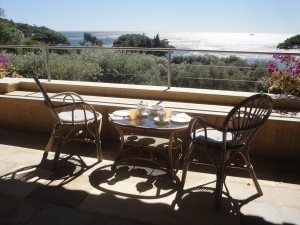 Sometimes my husband and I have our breakfast on this balcony. I love the view – it makes for a wonderful start to the day.
Sometimes my husband and I have our breakfast on this balcony. I love the view – it makes for a wonderful start to the day.


